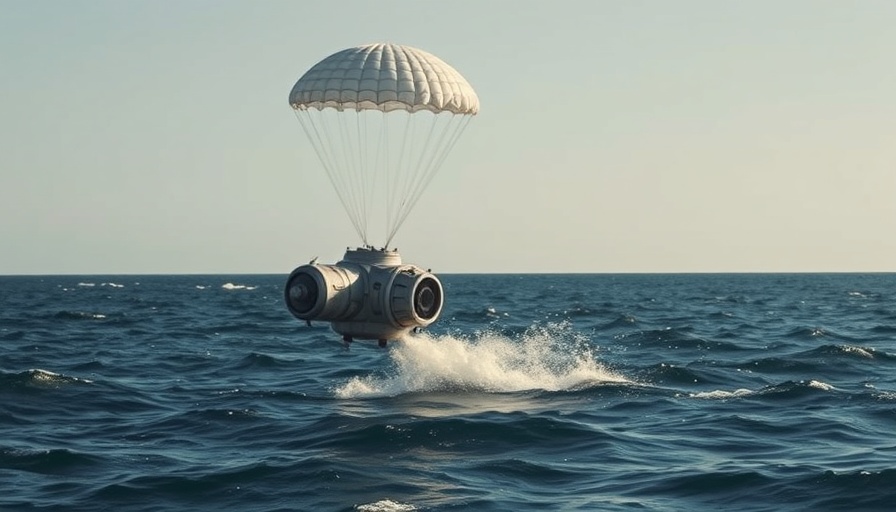
Historic Splashdown: Astronauts Mark a New Chapter for ISS Missions
In a spectacular conclusion to their five-month mission, NASA astronauts Anne McClain and Nichole Ayers, joined by Japan’s Takuya Onishi, splashed down safely in the Pacific Ocean following a critical role in supporting the International Space Station (ISS). This mission was exceptionally significant, as it not only concluded their extended time in space but also provided necessary relief to the ISS crew who had been stranded due to unforeseen circumstances.
The Journey: Orbital Adventures and Extraordinary Achievements
During their time aboard the ISS, the crew orbited the Earth an impressive 2,368 times, covering an astounding distance of over 63 million miles. Their mission focused not only on scientific research and technology testing but also on updating living accommodations and enhancing life-support systems aboard the space station. These efforts are part of a larger agenda to ensure that the ISS continues to support ground-breaking research long into the future.
The Significance of Crew Rotation in Space Exploration
The successful crew rotation underscores the importance of maintaining a reliable spacecraft and crew availability in space exploration. This has implications far beyond the ISS; as nations and private companies intensify their ambitions for deep space missions—be it lunar landings or Mars exploration—the efficacy of crew rotations and timely returns will become paramount.
Technological Advancements: The Role of Innovation in Space Missions
The advancements in spacecraft technology played a crucial role in this mission’s success. Innovations in materials and life-support systems have been designed not only to withstand the challenges of rebuilding the ISS ecosystem but also to enhance living conditions for astronauts. For instance, developments in in-suit technologies that monitor health metrics in real-time allow astronauts to maintain peak performance during their missions.
Looking Ahead: The Future of International Space Collaboration
This particular mission reaffirms the value of international teamwork in achieving common goals in space exploration. As national interests align towards sustainable exploration of our solar system, collaborative efforts between countries like Japan and the United States signal a promising future for global projects in this arena. Future missions are anticipated to focus on lunar bases, with aspirations for Mars missions following closely behind.
Public Interest in Space: The Importance of Shared Endeavors
One can't underestimate the public interest that these missions generate, impacting everything from political will to funding for future explorations. The return of the astronauts not only engages general curiosity but fosters educational programs and STEM initiatives that inspire a new generation to consider careers in science and technology. Highlighting the human aspect of these space missions fuels further engagement, compelling stories of bravery, sacrifice, and achievement resonate with audiences back on Earth.
Conclusion: Why This Matters to All of Us.
As space missions, like the recent ISS operations, continue to push the envelope of our capabilities, the ripple effects influence numerous domains, including national security, economic interests, and international diplomacy. These operations provide essential insights into our planet’s environmental economy, security, and political relations, thereby reminding society of the interconnectedness of global endeavors, particularly in this era of geopolitical tensions and the race towards technological supremacy.
As we look toward forthcoming missions, it’s essential for both the public and the policy-makers to engage with these advancements actively. By doing so, they ensure that the future of space exploration continues to thrive, leading humanity to new horizons.
 Add Element
Add Element  Add Row
Add Row 



Write A Comment